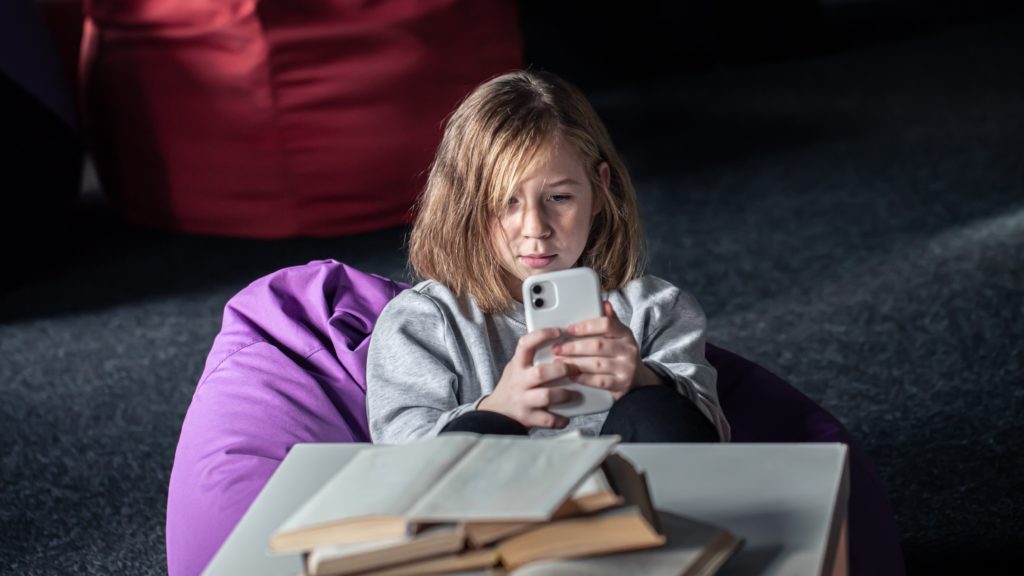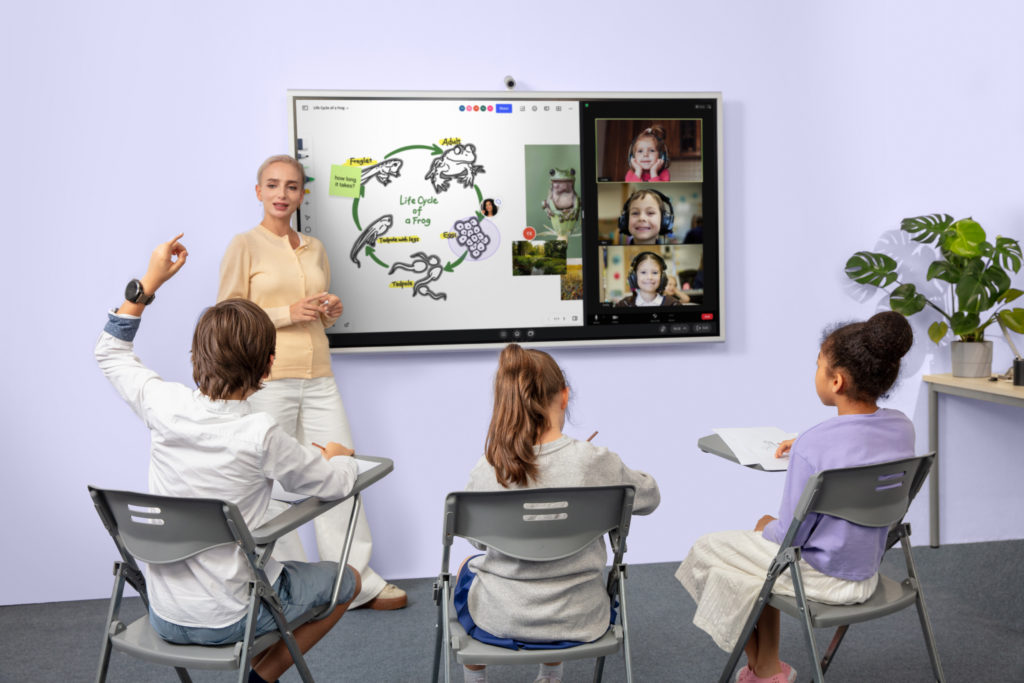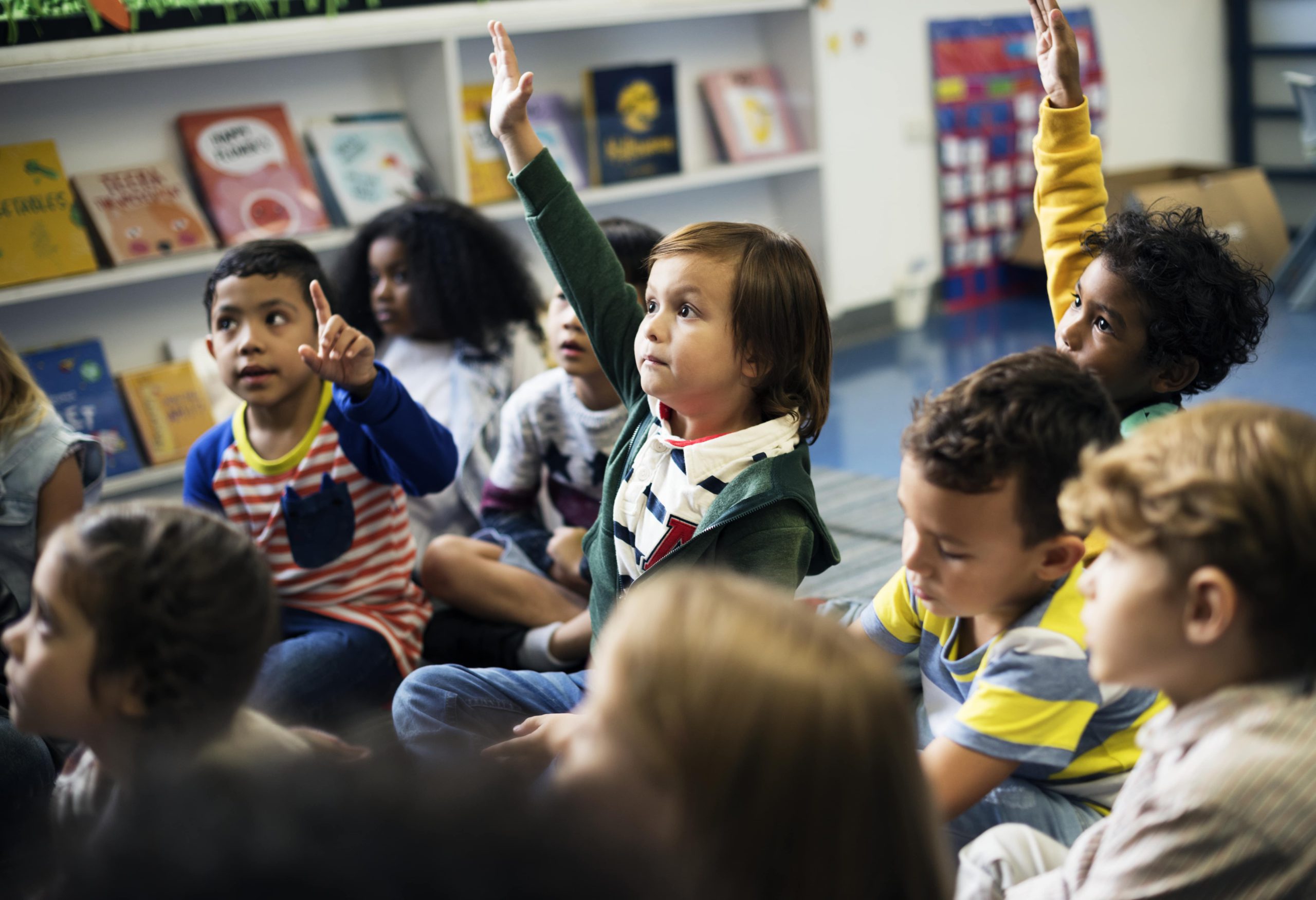Remote education has evolved from a temporary solution to a permanent fixture in our educational environments. The shift brings substantial benefits while presenting unique challenges that vary across different learning modalities. Understanding how remote approaches work, their advantages, limitations, and effective implementation strategies matters for everyone involved in education today. This guide aims to help students, educators, and parents alike gain practical knowledge about digital learning to make informed decisions. The changing nature of education demands we look closely at what works, what doesn’t, and why it matters for academic success in increasingly digital classrooms.

What is Remote Learning?
Remote learning happens when students and teachers connect through digital platforms instead of meeting in physical classrooms. When students engage in remote learning, they access their education from any location with internet access, whether it’s their bedroom, a coffee shop, or even while traveling. While many use the terms interchangeably, remote learning usually refers to learning that happens outside a physical classroom, and virtual learning specifically emphasizes the digital environment and tools used. Remote learning might include offline components like physical textbooks or printed worksheets, while virtual learning is conducted entirely online through digital platforms.
The growth of remote learning in education has revolutionized how knowledge is delivered and received across all levels of schooling. Teachers design and deliver instruction using various technologies like video conferencing, learning management systems, and interactive digital tools.
Remote learning comes in different formats to suit various educational needs and preferences:
-
Synchronous learning – Classes happen in real-time, where students and teachers interact simultaneously through video calls or chat
-
Asynchronous learning – Activities are self-paced, allowing students to complete assignments, watch recorded lectures, and participate in discussion boards on their own schedule
Many successful remote learning programs blend both approaches to create a balanced educational experience that meets diverse student needs.
Remote Learning Across Different Settings
K-12 Remote Education
Remote learning in K-12 education relies on online platforms that create virtual classroom environments. Students connect through Google Classroom for assignments and resources, while programs like Zoom facilitate interaction for class discussions and presentations. Educational apps make learning engaging through gamification, exercises, and visual elements that help students grasp concepts more easily.
Digital communication is essential for remote learning success in K-12 settings:
-
Email connects teachers, students, and parents
-
Video calls enable one-on-one support and small group work
-
Discussion boards let students share ideas and collaborate outside of class time
-
Interactive games and quizzes maintain interest and provide quick feedback
Parental involvement becomes crucial in remote learning, especially for younger students needing help with technology and time management. Parents help ensure children follow schedules, complete assignments, and stay focused during virtual classes. They also monitor progress by checking grades and communicating with teachers about any concerns.
Higher Education
Remote learning in higher education has evolved into a sophisticated ecosystem designed specifically for advanced academic work. The flexibility of self-paced learning stands as its cornerstone benefit. Students juggling work and family commitments can navigate coursework around their schedules, while recorded lectures enable student engagement during optimal learning periods rather than fixed class times. This accessibility has transformed degree programs for non-traditional students previously excluded from higher education.

Learning management systems serve as the central hub, organizing course materials, assignments, and grades in one location. These platforms typically include essential tools like plagiarism detection, automated grading, and progress tracking that streamline administrative tasks for faculty while providing students with a clear structure.
Communication flows through multiple channels in college-level remote learning. Discussion forums create spaces for peer-to-peer academic conversation, while email enables direct student-professor interaction. Video conferencing supports virtual office hours and group collaboration, maintaining the personal connections critical to effective learning despite physical separation.
Timely feedback drives student success in online environments. Live assessment tools during synchronous sessions give professors immediate insights into comprehension, while automated systems provide quick responses to submitted work. This rapid feedback cycle helps students identify knowledge gaps and adjust their approach before misconceptions become entrenched.
Rich multimedia content brings depth to the remote learning experience. Video lectures illustrate complex concepts through demonstrations, while interactive learning simulations allow students to apply theoretical knowledge in practical scenarios. These approaches prove particularly valuable in disciplines like science, engineering, and business, where conceptual application forms the foundation of professional practice.
Benefits of Remote Learning
Remote learning offers numerous advantages that extend beyond the simple convenience of learning from home. These benefits transform educational accessibility, learning pace, educational opportunities, financial considerations, and even environmental impact. Understanding these advantages helps educators, students, and institutions maximize the potential of remote learning approaches while appreciating their broader societal value.
Flexibility and Accessibility
Remote learning breaks down geographic barriers that previously limited educational opportunities for many students. Learning from anywhere means students in rural areas can access specialized courses not offered locally, and those with mobility challenges can participate fully without navigating physical campus obstacles.
The flexibility of remote learning makes education possible for:
-
Working adults who can study during evenings or weekends
-
Parents who need to arrange learning around childcare
-
Students with health conditions that make consistent attendance difficult
-
Those balancing multiple responsibilities who can maximize small pockets of available time
-
Learners looking for a hybrid classroom learning experience

Remote learning adapts to almost any schedule, allowing students to fit their education around work commitments, family responsibilities, or peak productivity hours.
Self-paced Learning Opportunities
Studying at your own speed represents one of the most significant advantages of remote learning, particularly for students who process information differently than their peers. Fast learners can move quickly through familiar material and spend more time on challenging concepts, while those who need additional practice can take extra time without feeling rushed or holding others back. The ability to revisit materials anytime provides a safety net for understanding complex topics, as students can rewatch video lectures, reread explanations, or retry practice problems until they achieve mastery. Self-paced learning reduces pressure and stress by eliminating the need to keep up with an entire class, allowing students to work through material thoroughly rather than superficially just to meet deadlines, creating deeper understanding and better long-term retention of information.
Expanded Educational Horizons
Remote learning opens doors to global educational programs that would otherwise remain inaccessible to most students due to geographic, financial, or personal constraints. Students can enroll in specialized courses from institutions worldwide without relocating, experiencing diverse teaching approaches and perspectives that enrich their understanding. Platforms like Coursera, Pluralsight, and Udemy have democratized access to knowledge, offering thousands of courses from prestigious universities and industry experts at a fraction of traditional tuition costs. Remote learning provides access to top instructors and experts in various fields who can share their knowledge with students regardless of location, creating learning opportunities previously available only to those who could physically attend elite institutions. The broader subject choices available through remote learning allow students to pursue niche interests or specialized career paths that local educational options might not support, tailoring their education more precisely to their goals and passions.
Cost Efficiency for Students and Institutions
Remote learning eliminates commuting costs, saving students significant money on gas, parking fees, public transportation, and vehicle maintenance throughout their education. A 2021 study by the Education Data Initiative found that students save an average of $1,200 per year on commuting and housing expenses through online learning. Many remote learning programs offer lower tuition options compared to traditional in-person instruction, making education more affordable and reducing student loan debt. Institutions benefit from fewer facility expenses when offering remote courses, with reduced needs for classroom space, building maintenance, utilities, and campus services, allowing them to serve more students without expanding physical infrastructure. Students also save on ancillary expenses like campus housing, meal plans, and relocation costs, making education financially feasible for those who couldn’t otherwise afford to attend a distant institution.

Reduced Environmental Impact
Less travel to and from campus translates directly into lower carbon emissions, with thousands of students staying home rather than commuting daily by car or public transportation. Remote learning dramatically reduces the need for printed materials as readings, assignments, and assessments all move online, saving paper and decreasing deforestation and waste. Campus energy use decreases significantly when buildings don’t need lighting, heating, cooling, and power for thousands of daily visitors, further reducing the carbon footprint of education through remote learning options.
Challenges of Remote Learning
Despite its many benefits, remote learning comes with significant challenges that can impact the effectiveness of the educational experience. From social isolation to technical difficulties, home distractions, motivation issues, and adaptation struggles, these obstacles can undermine learning outcomes if not properly addressed. Recognizing these challenges is the first step toward developing effective strategies to overcome them and create successful remote learning experiences.
Lack of In-person Social Interaction
Remote learning limits the natural peer bonding that happens through casual conversations before and after class, shared study sessions, and extracurricular activities. Face-to-face discussions offer nonverbal cues, spontaneous exchanges, and immediate feedback that virtual formats often lack, potentially reducing the depth and quality of academic discourse. Many remote learners report feeling isolated or disconnected from their learning community, missing the sense of belonging and shared experience that traditional classrooms provide naturally.
Technical Difficulties
Software or platform issues frequently interrupt remote learning sessions, from frozen video calls to system crashes or incompatibility problems between different technologies. Hardware limitations create inequities among students when some lack reliable computers, webcams, microphones, or high-speed internet access needed for full participation. Technical problems disrupt the learning flow by breaking concentration, causing missed information, and creating frustration that can diminish motivation and engagement with course material.
Distractions at Home
Household noise from family members, roommates, neighbors, or pets can make concentration difficult during remote learning sessions, especially in small living spaces without private study areas. Many students struggle to stay focused when surrounded by household chores, entertainment options, and personal belongings that compete for attention during study time. The unstructured environment at home lacks the psychological boundaries of a classroom dedicated specifically to learning, making it harder to enter and maintain a focused academic mindset.

Lack of Motivation
Remote learning provides less external accountability than in-person classes where teachers and peers notice absences or incomplete work immediately. Many students find it easy to procrastinate when deadlines seem abstract and no one is physically present to check progress or provide encouragement. The physical and psychological distance in remote learning often leads to reduced engagement with material, discussions, and activities, particularly when technical issues or distractions further diminish the learning experience.
Adapting to New Learning Styles
Not all students learn well online, particularly those who rely heavily on hands-on experiences, immediate feedback, or social learning strategies that work better in person. Remote learning presents a steep learning curve for students accustomed to traditional classroom environments, requiring them to develop new skills in time management, digital literacy, and self-advocacy. Success in remote learning requires strong self-discipline to establish routines, avoid distractions, and complete work without external structure, which proves challenging for many students regardless of their academic abilities.
Discover more of the pros and cons of online school →
5 Impactful Remote Learning Success Strategies
To combat the challenges in remote learning, educators need practical strategies to help their students overcome these obstacles. The following approaches will help you create structure, optimize your teaching environment, build connections, motivate learners, and effectively use technology to deliver engaging remote instruction.
1. Create a Structured Teaching Routine
Establishing consistent teaching times helps you develop the discipline and habits that lead to instructional success in remote environments. Planning breaks between virtual sessions prevents burnout and maintains your energy levels throughout the day, ensuring that your teaching remains engaging rather than diminishing in quality. Sticking to a predictable schedule creates structure that helps both you and your students prepare mentally for learning activities, reducing the cognitive load needed to transition between different teaching responsibilities.

2. Set Up a Dedicated Teaching Space
Design a quiet, clutter-free environment that minimizes distractions and signals to your brain that it’s time to focus on teaching rather than personal activities. Your remote teaching space should be comfortable and well-lit to prevent physical strain during long virtual sessions, with ergonomic seating and appropriate screen height to avoid neck, back, or eye problems. Create a professional background for video sessions and keep your teaching area free from distractions by silencing phones and closing unnecessary browser tabs to maximize your instructional effectiveness.
3. Foster Connection and Engagement
Facilitate virtual collaborative activities that recreate the interactive experience of traditional classrooms, providing motivation, diverse perspectives, and social connection for your students. Design active participation opportunities in your virtual classes to deepen student engagement beyond passive listening or reading. Establish regular office hours and communication channels to build your instructional support network with students, creating accessible avenues for questions, feedback, and encouragement when learners encounter challenges.
4. Implement Motivation Strategies for Your Class
Design your curriculum with small, achievable milestones to create momentum through frequent student wins rather than overwhelming them with large, distant objectives. Provide regular progress updates and visualization tools that give students evidence of their accomplishments, motivating continued effort during challenging portions of the course. Incorporate recognition and reward systems for reaching milestones to reinforce positive learning behaviors through immediate feedback, making the remote learning process more enjoyable and sustainable for your students.
5. Choose Educational Technology
Invest time in learning your remote teaching platforms before implementing them in your classroom to prevent stress and lost instructional time, allowing you to focus on content delivery rather than troubleshooting. Keep your teaching software and applications updated to ensure compatibility with institutional systems and access to the latest pedagogical features. Develop backup plans for technology issues, including alternative presentation methods, offline activities, or asynchronous options to prevent disruption to your teaching schedule when technical problems inevitably arise.
Vibe Board S1: Revolutionizing Remote Learning Experiences
Remote learning reaches new heights with the Vibe Board S1, an all-in-one collaborative solution that transforms virtual classrooms through its interactive digital whiteboard with cloud capabilities. Students and teachers connect in real-time from any device, including computers, tablets, and smartphones, creating a truly accessible learning environment regardless of location or hardware.
Key features that enhance remote learning include:
-
Intuitive whiteboarding with responsive 8ms touch technology for a natural writing experience
-
AI-powered handwriting recognition that converts notes to digital text automatically
-
Infinite canvas providing unlimited creative expression for complex diagrams and extensive notes
-
Seamless integration with popular education apps that teachers and students already use
Content management becomes simplified for educators using the Vibe Board, saving valuable time that can be redirected to actual teaching. Automatic cloud saving stores all discussions and brainstorming sessions securely without requiring manual backups or downloads. The system allows easy import from Google Drive, Dropbox, and OneDrive, integrating smoothly with existing resource libraries that teachers have already developed. Pre-built templates jumpstart lesson planning with professionally designed frameworks for various educational activities, from mind maps to project timelines, further streamlining the remote learning process. Utilizing the correct tech tools like the Vibe Board enables teachers to boost student engagement in remote learning to help keep students focused and engaged like never before.
Transforming How We Learn
Remote learning has revolutionized education by breaking down barriers of location, schedule, and access that previously limited learning opportunities for many students. From K-12 classrooms to higher education institutions, remote learning provides flexibility, accessibility, and personalized pacing that traditional education often struggles to deliver. While challenges like social isolation, technical difficulties, and motivation issues exist, they can be overcome through structured routines, dedicated learning spaces, and effective technology use. Tools like the Vibe Board take remote learning to new heights by creating interactive, collaborative experiences that bridge the gap between physical and virtual classrooms. As education continues to evolve, remote learning will remain an essential component of accessible, flexible, and effective learning for students worldwide. Learn more about the Vibe Board S1 to see how it can transform your remote learning experience!








-1sbltxxq4FYxHrXrwJVLsCDNsXpqNa.webp)
-5Zp0pmSytvcuYDVs1LvuwplKuRneK0.webp)
